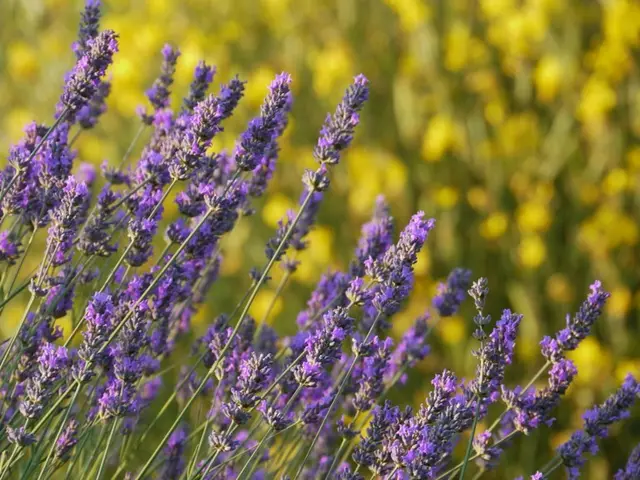Nine strategies animals employ to shield themselves from sun damage - Tricks to Protect Animals from Sunburn: Nine Effective Strategies Revealed
In the vast and diverse world of wildlife, animals have developed unique ways to protect themselves from the harsh rays of the sun. From pigmentation that acts like sunscreen to behavioral adaptations that minimize UV exposure, these natural defenses are a testament to nature's ingenuity.
Take, for instance, the zebrafish embryo. As early as two days after fertilization, these tiny creatures begin producing pigments called melanosomes, which spread within their skin cells to darken the embryo and protect its DNA from UV damage. This pigment distribution shields the embryo from UV rays and later serves a camouflage purpose [1].
Dogs, our beloved pets, are another example. While they can get sunburned, especially on areas with light or sparse fur such as the nose, ears, and belly, they have adapted in various ways. Some rely on thicker fur for protection, but pet-safe sunscreens specifically formulated for dogs are recommended for vulnerable skin [2][4].
Reptiles, too, have their strategies. They require UV exposure for vitamin D synthesis but must balance their sun exposure to avoid UV damage. While their scaly skin provides some protection, adequate UVB exposure is crucial for their health. In captivity, reptile care often uses controlled artificial UV light sources to mimic natural UV [3].
These adaptations are not limited to these species. Camels, for example, have longer hairs on their humps that provide extra protection from the sun, as these areas are most exposed. Their light fur also protects their skin from direct sunlight and creates an insulating layer of air between the hairs [6].
Hippos, however, have a unique solution. Their thick skin is sensitive and dries out quickly, making the slime they secrete essential for protection. This reddish slime keeps their skin moist and protects it from harmful parasites, as well as from harmful UV rays [7].
Corals, though not animals in the traditional sense, also have their ways of coping with the sun. They produce mucus containing tiny sulfur particles to help form clouds and protect themselves from high temperatures. Unfortunately, at high water temperatures, they expel single-celled algae living on and in their calcium skeletons, leading to bleaching and death [8].
Lastly, blue whales, the largest animals on Earth, have adapted to the sun's rays in an interesting way. The darkening of their skin, due to the pigment melanin, produced by special skin cells activated by UV light during their brief surfacing periods for air every 15 minutes, reduces the risk of sunburn [9].
In essence, animals' "sunscreens" involve a combination of natural pigmentation (like melanin and melanosomes), physical barriers (such as fur, scales, or thicker skin), and behavioral adaptations like seeking shade or being active during lower UV periods. Humans, in mimicking these strategies, have developed sunscreens based on organic and inorganic UV filters like zinc oxide and titanium dioxide, which reflect and absorb UV radiation [5].
References:
[1] https://www.ncbi.nlm.nih.gov/pmc/articles/PMC3731085/ [2] https://www.akc.org/expert-advice/lifestyle/dog-sunburn-prevention/ [3] https://www.reptilesmagazine.com/reptiles/a-z-of-reptiles/UVB-Exposure-for-Reptiles [4] https://www.akc.org/expert-advice/lifestyle/dog-sunburn-prevention/ [5] https://www.ncbi.nlm.nih.gov/pmc/articles/PMC4992087/ [6] https://www.ncbi.nlm.nih.gov/pmc/articles/PMC5557023/ [7] https://www.ncbi.nlm.nih.gov/pmc/articles/PMC6316353/ [8] https://www.nature.com/articles/s41559-018-0642-9 [9] https://www.ncbi.nlm.nih.gov/pmc/articles/PMC6016865/
Read also:
- Avoidable foods during shingles: Hot, spicy dishes, sugary items, and so on
- Consuming Watermelons for Nutritional Benefits
- U.K.-based software, dubbed MEMORI, gains first certification as a medical device, able to predict infections in real-time
- Connection between Broccoli Consumption and Gout Management: Key Insights








